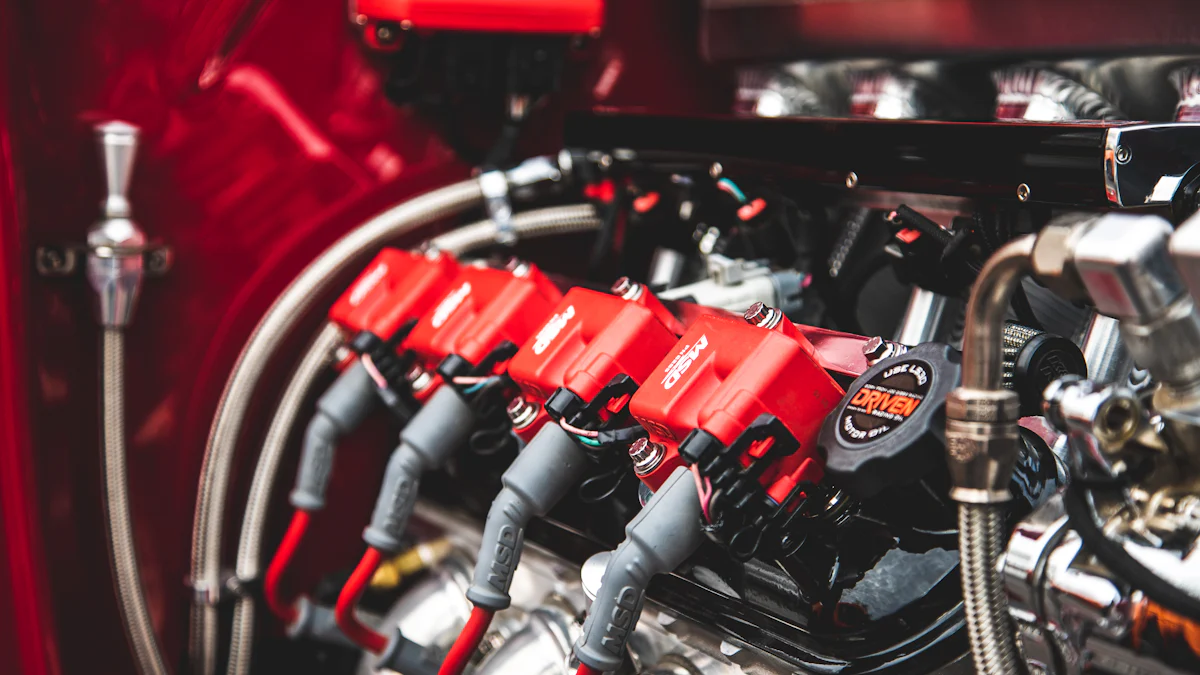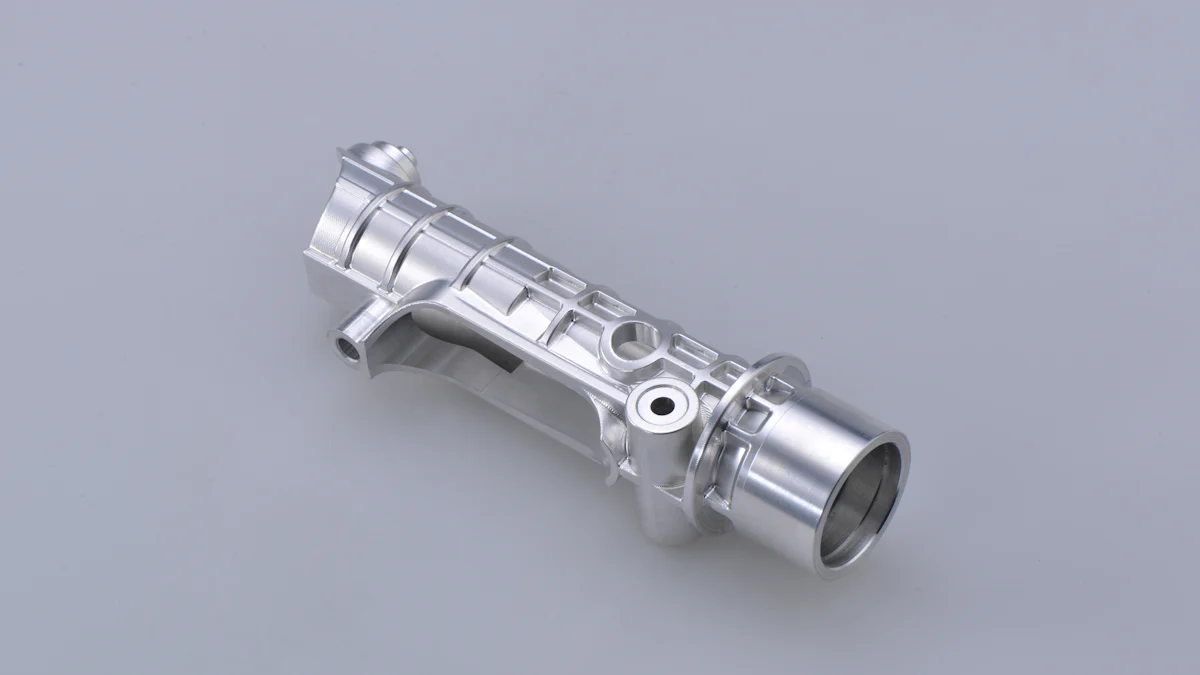
Eco-friendly vehicle design aims to minimize environmental impact while maintaining performance. Engine efficiency plays a critical role in reducing emissions and conserving fuel. The intake manifold, a crucial engine component, optimizes the air-fuel mixture, enhancing combustion efficiency. This optimization leads to improved horsepower, torque, and fuel economy. Upgrading the intake manifold can result in significant performance gains, such as a 24 hp increase on a 5.3L engine. By improving airflow, the intake manifold contributes to both engine performance and environmental sustainability.
Understanding Intake Manifolds
Definition and Purpose
What is an intake manifold?
An intake manifold serves as a crucial component in an engine. The primary function involves distributing the air-fuel mixture to the engine’s cylinders. This distribution ensures that each cylinder receives an equal amount of the mixture, which is vital for efficient combustion. The intake manifold also helps in optimizing the engine’s performance by maintaining a smooth flow of air and fuel.
Why is it important in an engine?
The importance of an intake manifold lies in its ability to enhance engine efficiency. By ensuring an even distribution of the air-fuel mixture, the intake manifold contributes to better combustion. Improved combustion leads to increased horsepower and torque. Additionally, a well-designed intake manifold can significantly reduce emissions, making it essential for eco-friendly vehicle design.
Components of an Intake Manifold
Plenum
The plenum acts as a reservoir for the air-fuel mixture. It provides a space where the mixture can accumulate before being distributed to the cylinders. The size of the plenum plays a crucial role in the performance of the intake manifold. A larger plenum allows for increased air volume, which can improve high-end power.
Runners
Runners are channels that connect the plenum to the intake ports of the cylinders. The length and shape of the runners affect the engine’s performance. Longer runners can enhance low-end torque, while shorter runners are better for high-end power. The design of the runners aims to minimize turbulence and ensure a smooth flow of the air-fuel mixture.
Throttle Body
The throttle body controls the amount of air entering the intake manifold. It consists of a valve that opens and closes based on the driver’s input. The throttle body plays a significant role in regulating the engine’s power and efficiency. A well-functioning throttle body ensures that the right amount of air enters the intake manifold, contributing to optimal combustion.
Types of Intake Manifolds
Single-plane vs. dual-plane
Single-plane and dual-plane intake manifolds differ in their design and performance characteristics. A single-plane intake manifold features a single plenum that feeds all the cylinders. This design is ideal for high-RPM performance, offering better airflow at higher speeds. In contrast, a dual-plane intake manifold has two separate plenums, each feeding half of the cylinders. This design enhances low to mid-range torque, making it suitable for everyday driving conditions.
Variable intake manifolds
Variable intake manifolds offer the advantage of adapting to different engine speeds. These manifolds can change the length of the runners based on the engine’s RPM. At low speeds, longer runners enhance torque, while at high speeds, shorter runners improve power. This adaptability makes variable intake manifolds highly efficient and versatile, contributing to both performance and fuel economy.
How Intake Manifolds Work

Air-Fuel Mixture Distribution
Role in air-fuel mixture
The intake manifold plays a pivotal role in distributing the air-fuel mixture to the engine’s cylinders. This component ensures that each cylinder receives an equal amount of the mixture, which is crucial for efficient combustion. The design of the intake manifold minimizes turbulence and pressure drops, creating a smooth and uninterrupted flow of the air-fuel mixture. This even distribution helps maintain optimal combustion conditions, leading to better engine performance.
Impact on combustion efficiency
Combustion efficiency directly impacts engine performance and emissions. The intake manifold significantly influences this efficiency by ensuring a homogeneous mixture of air and fuel reaches each cylinder. A well-designed intake manifold reduces the likelihood of uneven combustion, which can lead to increased emissions and decreased power output. By optimizing the air-fuel mixture, the intake manifold enhances combustion efficiency, resulting in improved horsepower, torque, and reduced harmful emissions.
Impact on Engine Performance
Influence on horsepower and torque
The design and functionality of the intake manifold have a direct impact on an engine’s horsepower and torque. The length and diameter of the intake runners play a significant role in determining the engine’s torque characteristics. Longer runners typically enhance low-end torque, making the vehicle more responsive at lower speeds. Conversely, shorter runners are better suited for high-RPM performance, providing increased horsepower at higher speeds. The intake manifold design can thus be tailored to meet specific performance needs, whether for everyday driving or high-performance racing.
Effect on fuel efficiency
Fuel efficiency is another critical aspect influenced by the intake manifold. By ensuring an even and efficient distribution of the air-fuel mixture, the intake manifold helps optimize fuel consumption. Improved combustion efficiency means that the engine can extract more energy from the same amount of fuel, leading to better mileage. Additionally, a well-maintained intake manifold can prevent issues such as carbon buildup and leaks, which can negatively affect fuel efficiency. Regular inspections and maintenance of the intake manifold are essential for sustaining optimal fuel economy and reducing overall fuel consumption.
Common Issues and Maintenance
Common Problems
Leaks and cracks
Intake manifolds often face issues like leaks and cracks. Leaks can occur due to worn-out gaskets or seals. Cracks usually develop from thermal stress or physical damage. Both leaks and cracks disrupt the air-fuel mixture distribution. This disruption leads to poor engine performance and increased emissions. Regular inspections help identify these issues early. Addressing leaks and cracks promptly can prevent further engine damage.
Carbon buildup
Carbon buildup is another common problem in intake manifolds. Over time, carbon deposits accumulate inside the manifold. These deposits restrict airflow and affect the air-fuel mixture. Restricted airflow reduces engine efficiency and increases fuel consumption. Carbon buildup also leads to rough idling and poor acceleration. Cleaning the intake manifold periodically helps maintain optimal performance. Special cleaning solutions or professional services can remove carbon deposits effectively.
Maintenance Tips
Regular inspections
Regular inspections are crucial for maintaining intake manifold health. Visual checks can reveal signs of wear, leaks, or cracks. Listen for unusual engine noises, which may indicate manifold issues. Use diagnostic tools to check for error codes related to the intake system. Schedule inspections as part of routine vehicle maintenance. Early detection of problems can save costly repairs and ensure engine efficiency.
Cleaning and repairs
Cleaning the intake manifold should be part of regular maintenance. Use appropriate cleaning solutions to remove carbon deposits. Follow manufacturer guidelines for cleaning procedures. Consider professional cleaning services for thorough results. Repair any detected leaks or cracks immediately. Replace damaged gaskets or seals to prevent air leaks. Regular cleaning and timely repairs keep the intake manifold functioning optimally. This maintenance ensures better engine performance and fuel efficiency.
The Role of Intake Manifolds in Eco-Friendly Design
Enhancing Fuel Efficiency
Optimizing air-fuel mixture
An intake manifold optimizes the air-fuel mixture to enhance fuel efficiency. Proper distribution of the air-fuel mixture ensures that each cylinder receives an equal amount. This balance leads to more efficient combustion. Efficient combustion allows the engine to extract maximum energy from the fuel. This optimization reduces fuel consumption and improves overall engine performance.
Reducing fuel consumption
Reducing fuel consumption remains a primary goal in eco-friendly vehicle design. An intake manifold plays a crucial role in achieving this objective. By ensuring an even distribution of the air-fuel mixture, the intake manifold minimizes waste. Improved combustion efficiency means that the engine uses less fuel to produce the same amount of power. This reduction in fuel consumption translates to lower operating costs and fewer emissions.
Reducing Emissions
Improving combustion efficiency
Improving combustion efficiency directly impacts emission levels. An intake manifold contributes significantly to this improvement. By delivering a homogeneous air-fuel mixture to each cylinder, the intake manifold ensures optimal combustion conditions. Optimal combustion reduces the production of harmful pollutants. This reduction is essential for meeting stringent emission standards and promoting environmental sustainability.
Lowering harmful emissions
Lowering harmful emissions is critical for eco-friendly vehicle design. The intake manifold helps achieve this by enhancing combustion efficiency. Even distribution of the air-fuel mixture minimizes incomplete combustion. Incomplete combustion often results in higher emissions of carbon monoxide and unburned hydrocarbons. A well-designed intake manifold reduces these emissions, contributing to cleaner air and a healthier environment.
Intake manifolds play a pivotal role in engine performance and efficiency. These components facilitate the delivery of the air-fuel mixture to the combustion chambers, ensuring optimal combustion. In eco-friendly vehicle design, intake manifolds enhance fuel efficiency and reduce emissions. Regular maintenance and inspections of intake manifolds ensure sustained performance and longevity. Upgrading to high-performance intake manifolds can yield significant gains in horsepower and torque. Investing in quality intake manifolds contributes to both environmental sustainability and superior engine performance.
Post time: Jul-30-2024



